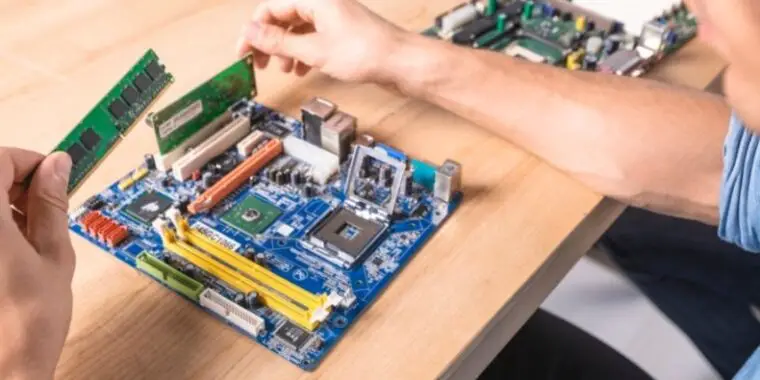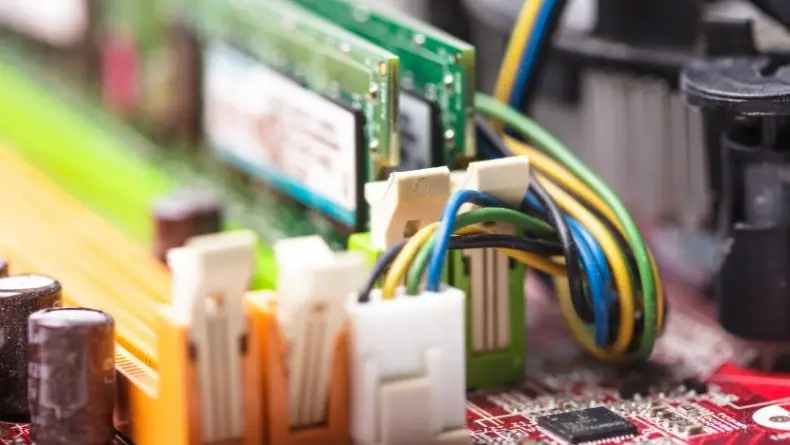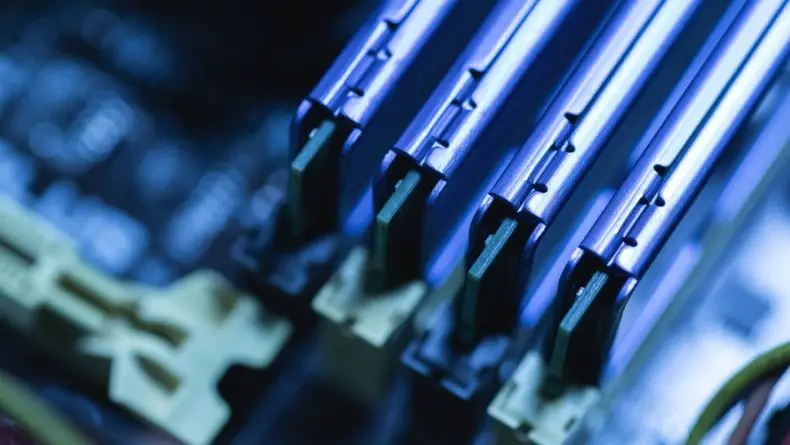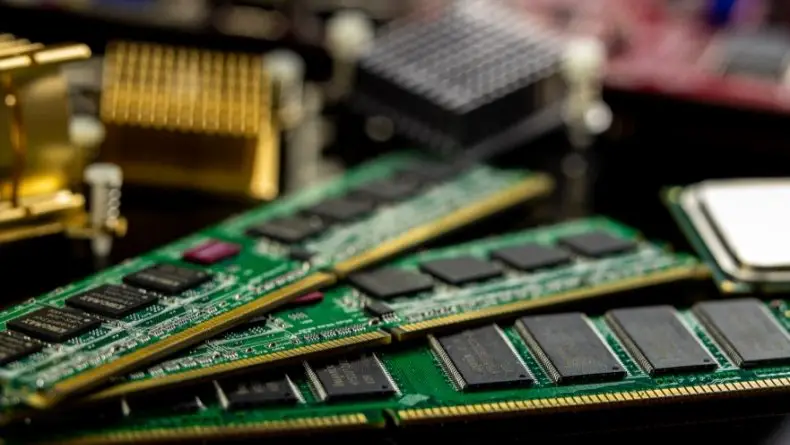
DDR3 RAMs have been on the market since 2007 and provide more performance than DDR2 and DDR1 modules. Even though we are about to enter the realm of DDR5 modules, many of us still have DDR3-supported systems.
As software gets bigger in size, we need to expand our RAM. However, choosing between two common DDR3 speed standards, DDR3 1600 and DDR3 1866 Mhz, might be difficult because each version has a minimal difference.
So, to help you, in this Ddr3-1600 Vs. Ddr3-1866 comparison, we’ll talk about which RAM speed should be chosen based on your needs.
But, before we start digging, let’s look at the different versions of DDR3 RAM:
Introduction of DDR3

DDR3, which stands for Double Data Rate 3, is the third generation of the DDR technology that was introduced in 2007 with the release of Intel’s Core 2 Duo processors.
As technology improves, new versions of DDR3 modules have been launched accordingly. Here is a quick table:
| Module Name | Module Peak Bandwidth | Module classification |
| DDR3-800 | 6400 MB/s | (PC3-6400) |
| DDR3-1066 | 8533 MB/s | (PC3-8500) |
| DDR3-1333 | 10667 MB/s | (PC3-10600) |
| DDR3-1600 | 12800 MB/s | (PC3-12800) |
| DDR3-1866 | 14933 MB/s | (PC3-14900) |
| DDR3-2133 | 17066 MB/s | (PC3-17000) |
Now let’s learn a bit more about today’s competitors- DDR3 1600 Mhz and 1866 Mhz:
#1: DDR3 1600 MHz
The maximum transmission rate of the DDR3 1600 (PC-12800) RAM is 12,800 megabytes per second. In terms of gaming, this is enough to run primary to mid-level games on your computer.
If we go back in time, it was the quickest RAM type of its time. But as technology improved, faster RAM came into the market. Though we can’t compare its speed with DDR4 and DDR5, it is still comparable with DDR3 (1866 Mhz).
#2: DDR3 1866 MHz
The DDR3 1866 stick has a little advantage over the DDR3 1600 MHz because of its faster clock speed. There won’t be much of a difference in gaming performance, but you can’t disregard it either. Furthermore, the highest peak data transmission rate of DDR3 1866 MHz is 14933 MB/s.
If you already have DDR3 1600 memory on your computer and wish to upgrade to 1866 MHz, you will notice an improvement in performance when browsing files and multitasking. However, the change would be unnoticeable to you.
So, Which Ram Speed to Choose: DDR3-1600 Vs. DDR3-1866?

If you know all the differences between these two RAM variants, then you will know which RAM speed would be ideal for you. Now let’s go through all the major differences between DDR3 1600 vs. 1866 MHz RAM speed:
#1: The Main Difference Is in Performance Speed
The main difference between DDR3 1866 & 1600 RAM is the frequency speed. DDR3 RAM may be trusted for performance speed because of its 8 bursts deeper pre-fetch buffering capability.
Yes, this 1866 MHz frequency rate can surely provide faster data transfer speeds than the 1600 MHz frequency speed. The higher the frequency rate, the faster the memory’s data transmission rate!
But the conflict does not stop there. DDR3 memory with a data transmission rate of 1600 MHz is appropriate for contemporary high-configured gaming & graphics editing. So, unless you check the performance benchmark, you won’t notice the small difference.
#2: Memory Bandwidth Varies Significantly
Memory bandwidth in RAM is another important factor for greater speed and responsiveness. You may be able to multitask or play Xbox games faster if you have more memory bandwidth.
The DDR3 1600 comes with a memory module categorization of PC3-12800, which means it has a maximum data transition rate of memory bandwidth of 12800 megabytes per second, or 12.8 gigabytes a second.
The 1866 Hz DDR3 RAM, on the other hand, has a memory module with PC3-14900 memory bandwidth, which is nearly 17% greater data transfer capacity than the DDR3 1600. A DDR3 1866 RAM’s typical data bandwidth maximum rate is 14900 MB/sec.
If you’re constantly multitasking or working with high-end graphics, 1866 can be really useful. Although DDR3 1600 does not result in a reduced peak data transfer rate, the transfer rate remains constant.
#3: Another Factor to Consider is CAS Latency
CAS latency (CL) indicates the clock cycle through which a RAM signal passes to fulfill an instruction given by system input.
The CAS latency affects the response rate in current DDR Rams. The smaller the CAS latency, the faster your performance will be. Well, the DDR3 1600 features a CAS latency of 9 to 13, while the DDR3 1866 does have a latency of 8 to 11.
A DDR3 1866 Memory can transport a phase of data 3,727 times per second in 0.525 ns. On the other hand, A DDR3 1600 MHz RAM transfers signal data 3,200 times per second in 0.625 ns.
So, as you can see, the change is rather small. However, if you need a game to load quickly while other chores are trailing back, the DDR3 1866 MHz memory might help you load them quicker.
However, for normal editing and gaming, 1600 MHz RAM is still enough.
#4: Difference between Motherboard Compatibility
Your major issue should be RAM suitability with the motherboard. If you buy RAM, which your motherboard doesn’t really support, the slot is useless.
However, if you install DDR3 RAM on an earlier model motherboard that does not support the DDR3 version, you will not be able to enjoy the true game-changing impact.
DDR3 1600 RAM is more often accessible to various motherboards. However, the 1866 DDR3 RAM may be more expensive with faster performance benefits.
Well, if you’re upgrading from DDR2 RAM, which your computer motherboard supports, DDR3 RAM may not be available for installation since DDR2 slots do not accept DDR3 RAM. As a result, you require either a new slot or a separate motherboard.
All modern PC motherboards include DDR3 & DDR4 RAM connection slots. In general, you may install DDR3 RAM on a 240-pin or 204-pin motherboard. As a result, ensure that your motherboard is compliant with the RAM you’re purchasing.
So, if you’re looking at APUs (AMD-based Power Units), go with DDR3 1866 if you can’t decide between 1600 and 1866. The change will be difficult to see with an Intel CPU.
#5: Difference Depending on Price and Your Build Objective
Unless you want high performance and a large amount of work, the distinction between 1600 MHz RAM & 1866 MHz Memory is minimal. But the 1866 MHz RAM will definitely be more expensive than the 1600 MHz RAM.
However, if you want to overclock the RAM cycle, DDR3 1866 is a good choice. Again, if you utilize integrated graphics and want to accomplish visuals that your system doesn’t really handle, then 1866 MHz DDR3 can be a tremendous help.
Similarly, if you only use your dedicated graphics for gaming and have no plans to overclock, there is little use in investing the extra money for a slightly faster clock cycle speed.
Yes, we can plainly observe that there are modest but significant changes between DDR3 1866 and 1600 MHz RAM. You may select any of them, but if you have the money, 1866 is the better option, even if it just slightly improves performance.
What Should You Know Before You Upgrade Your RAM?

Whenever you think about upgrading your RAM, you should focus on the following things for better output:
#1: How Much Memory Do You Need?
No matter which DDR3 speed you purchase, the actual performance will depend on the amount of your RAM.
If you simply want to use your PC for basic functions, you may easily get by with 8GB. However, you need to acquire at least 16GB of DDR3 1600 or 1866 memory. This is a good compromise between size and price. You may simply increase with that size for a few bucks extra.
Anything greater than 16 GB is appropriate for workstation PCs used for 4K video rendering, mathematical modeling, and CAD software. 3D design workstations with up to 32 GB of RAM are not uncommon.
#2: Check Your Motherboard’s Compatibility
As your computer’s motherboard does have a specific set of dual in-line RAM module slots (DIMM slots), that’s where you put the RAM. It will also define your RAM capacity.
The DDR form factor is used to standardize computer RAM modules. Only one is supported by motherboards, and which one is supported depends largely on the age of the motherboard.
So you will have to check your motherboard’s specifications to see which version of RAM it supports. Suppose your motherboard is old and supports only DDR2. Then you can’t upgrade it with DDR3 RAM in most cases.
#3: Remember to Keep an Eye on the Clock Speeds As Well
Another consideration is that you must not spend on a clock frequency that your computer does not support. You should verify with your motherboard to determine what it can support before purchasing DDR3 1600 or 1866.
Choosing the correct memory upgrade for your computer is really important to avoid further hassle. On the other hand, keep in mind that laptop and desktop RAM are not interchangeable!
#4: Think About Your Graphics
When deciding the size of RAM to purchase, consider whether you will use an integrated GPU or not. If you want to game with a dedicated GPU, you might not have to invest in faster RAM. But, if you are not going to utilize a specialized graphics card, the speed will assist you in getting the visuals you desire.
It’s also worth noting that all else would have to assist with that bandwidth, so getting a specialized video card instead of additional memory speed may make more sense.
So, keep a look at your video card to discover what speeds it requires, and then purchase your RAM at or above the required rates.
#5: Be Aware of What Your Games Demand
It’s also worth noting that most games don’t benefit from upgrades, only from quicker RAM. Your gaming performance will go so far until you have a computer that is able to perform considerably better than your game.
In fact, certain games will match the requirements and utilize all of your computer’s resources. For best performance, choose your CPU, graphics card, and RAM speed based on the needs of your games.
However, if your game requires DDR3, having 1866 MHz on hand is a good idea for future-proofing your build.
#6: Don’t Mix Up the Ram Size and Ram Frequency
It is not recommended to mix up different RAM sizes and frequencies when you update. You will also confirm the same voltage as well. That means that if you have 4 GB DDR3 1600 MHz RAM in your system, you must purchase another 4 GB of 1600 MHz RAM to benefit from dual-channel performance.
But if you do not maintain the size and clock speed, your system will get into flex mode, and the higher frequency will match the lower speed and run. In fact, combining RAM size and frequency can permanently damage your motherboard.
So, whenever you update your RAM, make sure you are not mixing the RAM size and frequency.
Yes, those are the aspects you must keep in mind during the time you are upgrading your RAM.
How Can You Check Your Ram Speed?
If you don’t know or forget your Ram Speed, then before you make an upgrade, it would be ideal for checking your Ram Speed first. Here we will be talking about some proven ways you can use to check your RAM details if you are using Windows 10 or 11:
Method 1: Use the Task Manager
You can use the Windows Task Manager to check your RAM speed instantly. To do that, you have to open your task manager.
- To launch Task Manager, press Ctrl+Shift+Esc on your keyboard at the same time.
- Once you have opened now, select memory from the Performance tab, there, you can see the details of your RAM, including RAM speed, the amount of memory that is now in use, and the amount of memory that is still accessible to you.
Method 2: Use Command Prompt
You can see your RAM details by using the command prompt as well. To do that-
- Press the Windows + R key at the same time on your keyboard, and it will open the Run box. Then type CMD and press enter. It will open the Command Prompt.
- Once you have opened the command prompt, type “wmic memorychip get speed” and press enter.
- It will tell you about your current RAM speed.
Method 3. Install Third-Party Software for the Details
Another way you can check your system information is by installing third-party software like CPU-Z or Driver Easy.
Both software is trusted and very simple to get used to it. To check your system information, you just install any of the software and then launch it.
It will automatically detect your specification and will tell you all you need to know about your RAM and other information.
So, these are some known ways to check your RAM speed easily, and We hope now you will be able to detect your RAM sleep before you will go to make an upgrade.
Some Questions You May Have

Basically, memory sends information towards other components at a faster rate when you have faster RAM.
Hence, when you achieve a higher frequency RAM, your CPU gets a faster way of communicating with the other components. So, yes, the higher the RAM frequency, the quicker the processing speed will be
Yes, you can mix the frequencies of 1600, and 1866 Mhz , and your PC will work fine. However, you will not receive the 1866 MHz speed; instead, your PC will go into the “flex mode,” with both RAMs running at 1600 MHz. Also, mixing two different RAM frequencies is not recommended.
Yes, you can, but you must focus on the same frequency, or the dual-channel mode will not operate optimally. Basically, the dual-channel mode works when the size and frequency are the same.
Assume your computer has 4 GB of RAM. To enable dual-channel mode, you will need to purchase another 4 GB stick.
To sum up, the answer is yes. You can technically mix & match RAM in your computer regardless of brand, speed, or size.
However, this may be troublesome when you do not maintain the frequency and size. Yes, depending on the configuration and workload, you may not notice any difference in performance.
If we talk about modern-day gaming, then we must say that 1866 MHz is not that great. Because considerably faster DDR5 has been released, with speeds of up to 5200 MHz, which is much quicker than the old DDR3 1866 Mhz.
However, if your machine only supports DDR3, 1866 MHz will still provide acceptable performance.
Final Words
Generally, glancing at the RAM speed alone isn’t enough to tell you the answer to the DDR3-1600 Vs. DDR3-1866 comparison. You should also consider the rest of your build’s components.
However, if you’re building a computer and can’t afford DDR4 or DDR5, or if you want to upgrade your current system, DDR3 1866 MHz (such as Patriot Viper 3 or Kingston HyperX Fury) may be a good choice because it will future-proof your system. Just make sure you’re aware of your system’s frequency compatibility.
On the other side, DDR3 1600 MHz still is widely used, but there are hints that it may become outdated in the coming years.